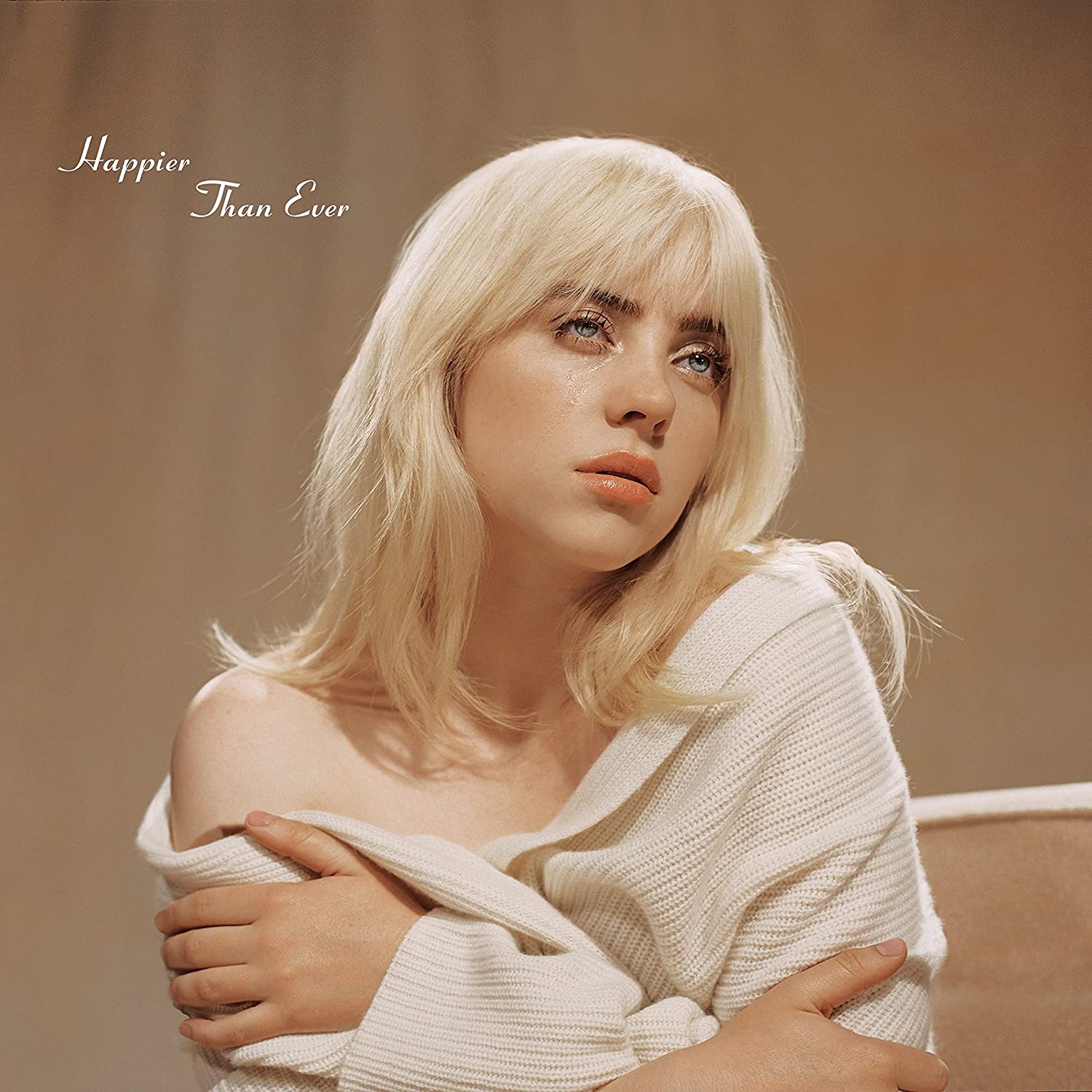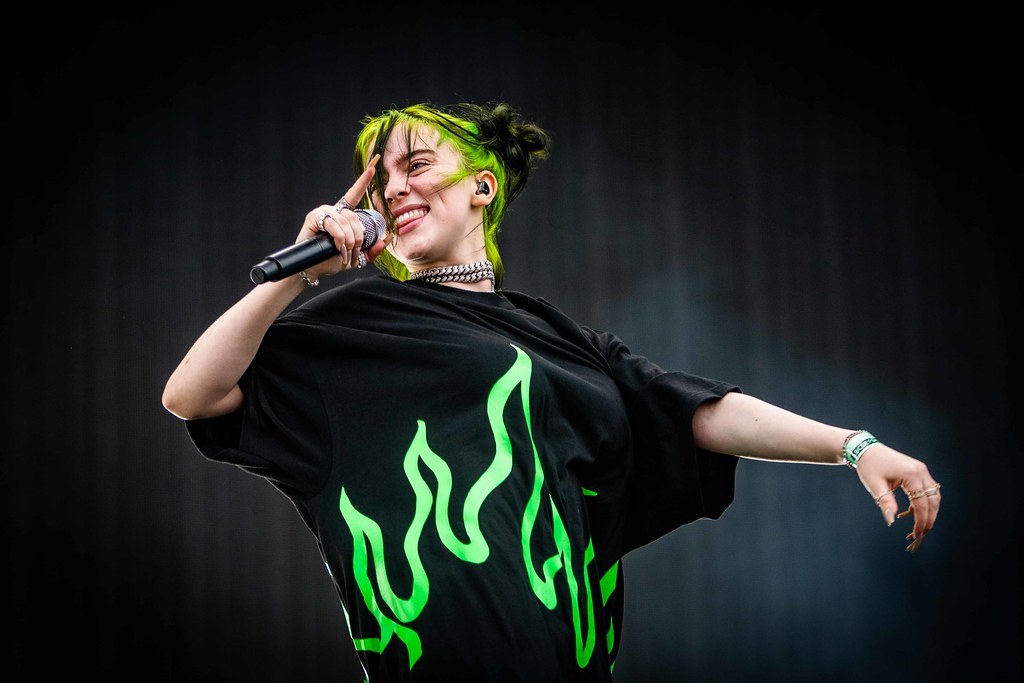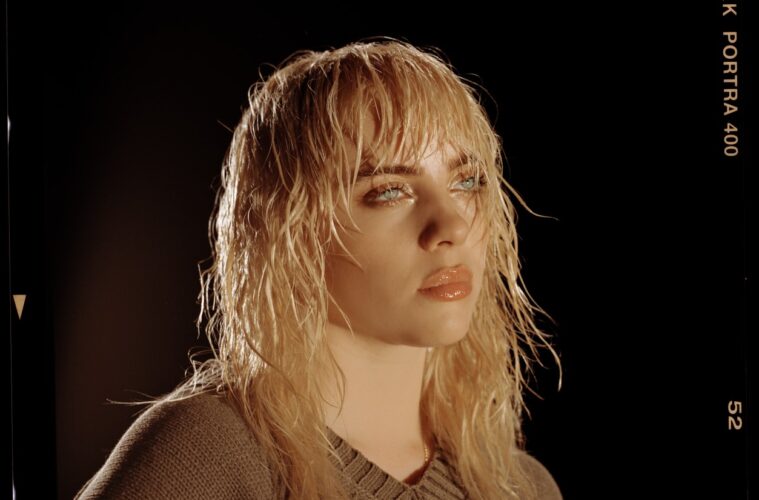There are perhaps no artists who epitomize the meteoric rise to fame propelled by internet and youth culture than Billie Eilish. Becoming an online international sensation even before the release of her debut full-length album in 2019, Eilish has developed a huge following and a unique personal brand since she began releasing music in her early teens.

Image courtesy of Clash Magazine
Now over the course of the past year she’s been changing that image, reinventing herself as a mature adult artist to build anticipation for her new, more mature album Happier Than Ever. Since she sprang onto the scene with a handful of singles in 2015, Eilish has been known for having a pretty distinct look: hair dyed in all sorts of colors from black to midnight blue to steely white to highlighter green, paired with lots of chains and jewelry and the absolute baggiest clothes possible in lots of flashy colours and outlandish patterns. In that respect she’s epitomized the Gen Z maximalist aesthetic, whereas her music on her 2019 studio debut When We All Fall Asleep, Where do We Go? took a minimalist and decidedly gloomy approach to modern pop music, further defining her niche identity as a pop star.

The album was a smash success, in part helped by Spotify multi-level multimedia campaigns backing the release, and When We All Fall Asleep, Where Do We Go? claimed the record for most pre-saved album ever on Apple Music. That record was snatched by the Weeknd in 2020 with his album After Hours, but with Happier Than Ever Billie Eilish reclaimed the title with over 1.028 pre-adds on Apple Music, the most in history. Currently, she’s the 18th most popular artists in the world on Spotify.
But Billie’s endeavours breaking the internet aren’t limited to just album saves and streams on various platforms. Late last year, Eilish began to modify her image in anticipation of the new album cycle (though we didn’t know it at the time). With the release of “Therefore I Am,” the second single for the album, Eilish began dressing in more neutral colours, primarily browns, beiges and off-whites. After attending the 2021 Grammys head to toe in an all-over tiger and floral print ensemble, Billie ditched the two-tone green and black hair for a chic and reserved bleach-blond look.
But the biggest step in her reinvention came when she appeared on the cover of Vogue in May, ditching the oversized edgy skatepunk look for a glamorous and elegant lingerie set in beige, tope and rose. Eilish had spoken many times in interviews about how her reasoning for wearing overly baggy clothes was to hide her body to protect herself from being sexualized in the public eye at such a young age. To see her then, now 19, so glamorously taking ownership over her body image in this way caused quite the stir across the internet and marked a major shift in both her image and her brand in the run-up to her new album.

Image courtesy of Vogue
And after this perfect storm of orchestrated publicity, Happier Than Ever definitely takes a big step into more mature sounds and concepts than Eilish’s first album. Dealing not only with her sexuality more openly, but also addressing the media’s response to her image and music, and the pressures that come with fame and unwanted attention as a young woman maturing in the industry. And with her brother Finneas’ production expanding on the sounds that drove her first album, the songwriting pair have created an hours worth of material that brings Billie’s usual subdued pop sensibilities to new frontiers with a keen lyricality and ear for subtle but effective production techniques to make strong, memorable tracks. Happier Than Ever has been widely championed by critics scoring highly across the board, with each song receiving between one and two hundred million plays a piece, and has been called the most important album of her career.
Published by HOLR Magazine


